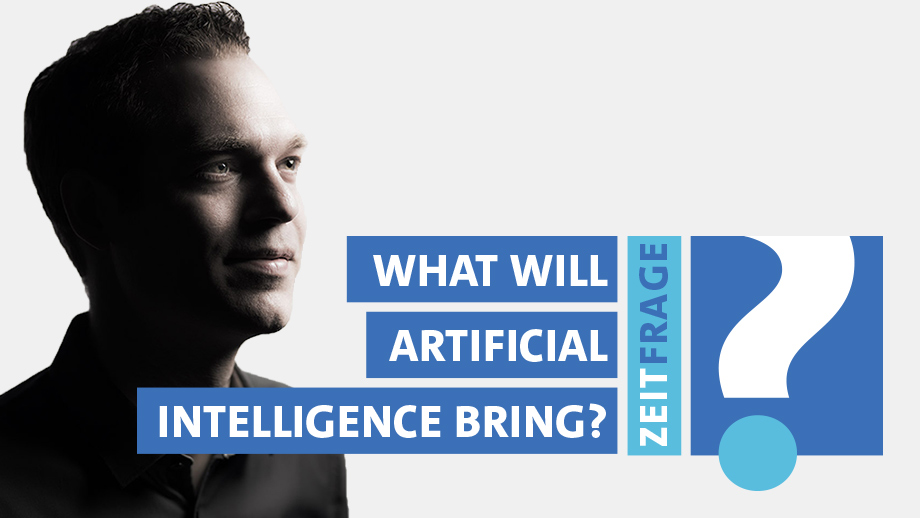Navigation auf uzh.ch
Navigation auf uzh.ch

Market design is one of the hottest jobs around at the moment. Market designers give form to modern markets, from Amazon, eBay and Spotify to organ donation and dating platforms. They then tinker around with them until they work perfectly. The underlying idea is nothing new. “Every market is designed, even the weekly market on the village square,” says Sven Seuken, who teaches informatics and economics with a special focus on electronic market design at the University of Zurich’s Department of Informatics.
But electronic markets give market designers more to think about than conventional markets. There are many levers to operate: Is there a fixed price? Is it an auction? Is there a minimum offer? How long will the auction last? “The market designer can set the levers however they like,” says Seuken. “In this way, they decide who benefits most from the market.” Ideally, it is both vendors and customers. According to Seuken, that is the art of market design: Anticipating how market participants will respond to a design to reap the greatest benefits for all involved.
This is relatively simple with markets such as eBay, where the items that change hands are easy to describe. But digitalization is increasingly crossing over to complex markets. For example, Sven Seuken is currently researching how an adoption agency platform can be improved to ensure every child is matched with the ideal adoptive family. This is a sensitive “market”, as it involves people, and therefore emotions and psychological vulnerability. And this is precisely where AI can help.
Seuken gives an example: To work out which children are likely to match which prospective parents, every child is initially assigned 75 attributes – age, origin, character, potential allergies, and many more. This results in a staggering 22-digit number of possible combinations. On the other side, you have the future parents with their desires and preferences, which also make up a huge number of potential combinations. A questionnaire would end up being much too long and could never cover all combinations. However, an algorithm can solve precisely this problem – particularly one that gets smarter with experience.
“Our aim is to make the best possible predictions with a small number of targeted questions,” explains the computer scientist. Instead of answering a hundred questions, parents looking to adopt would just answer 10 questions that are specifically tailored to them. Based on the responses, the algorithm looks for the right parent-child combination. If it is unsure, it inquires again. After two or three rounds of further inquiries, the requirements profile and offer profile should match – as the market jargon goes. The advantage of this iterative process is that it allows the algorithm to learn, and the more it is used, the more accurate it becomes. This is what we call machine learning. “The algorithm learns which combinations cause difficulties and crises further down the line in an adoption situation and which do not,” explains Seuken. It may be that contrary to all expectations, language problems are actually more serious than having a child in a wheelchair who needs round-the-clock care. The algorithm would remember such things for future placements. There are already a number of successful online adoption placement platforms. Seuken considers the website adoptakids.org run by the US State of Pennsylvania as a useful and successful example.
Whether successful or not, Seuken is aware of the risks involved in using AI in adoption processes. “A poor algorithm leads to worse results than manual allocation methods – so in this case to unhappy children and frustrated parents.” However, the computer scientist is convinced that precisely in complex tasks of this sort, AI outperforms human brain functionality by far. “With the aid of AI, the market designer can ask smarter questions and get better answers. The algorithm then suggests promising parent-child combinations, which ultimately increases the number of sucsyhcessful adoptions.”
Stock and commodity traders already use AI to optimize their operations. But Sven Seuken finds this application less interesting. He believes that the opportunities for self-learning AI as a tool for market designers are mainly in complex markets that offer customers “bundles” – that is, product packages rather than individual products. This includes, for example, the distribution of mobile frequencies to major communications providers, where Seuken’s iterative inquiry method performs better than conventional auctions.
Sven Seuken’s next challenge involves the allocation of seminars and lectures at business schools. Every semester, students have to book a fixed number of events, but the number of places at each event are limited. The computer scientist believes that iterative algorithms could be helpful by consulting students multiple times until they find the optimum combination of preferred but also available seminars and lectures.